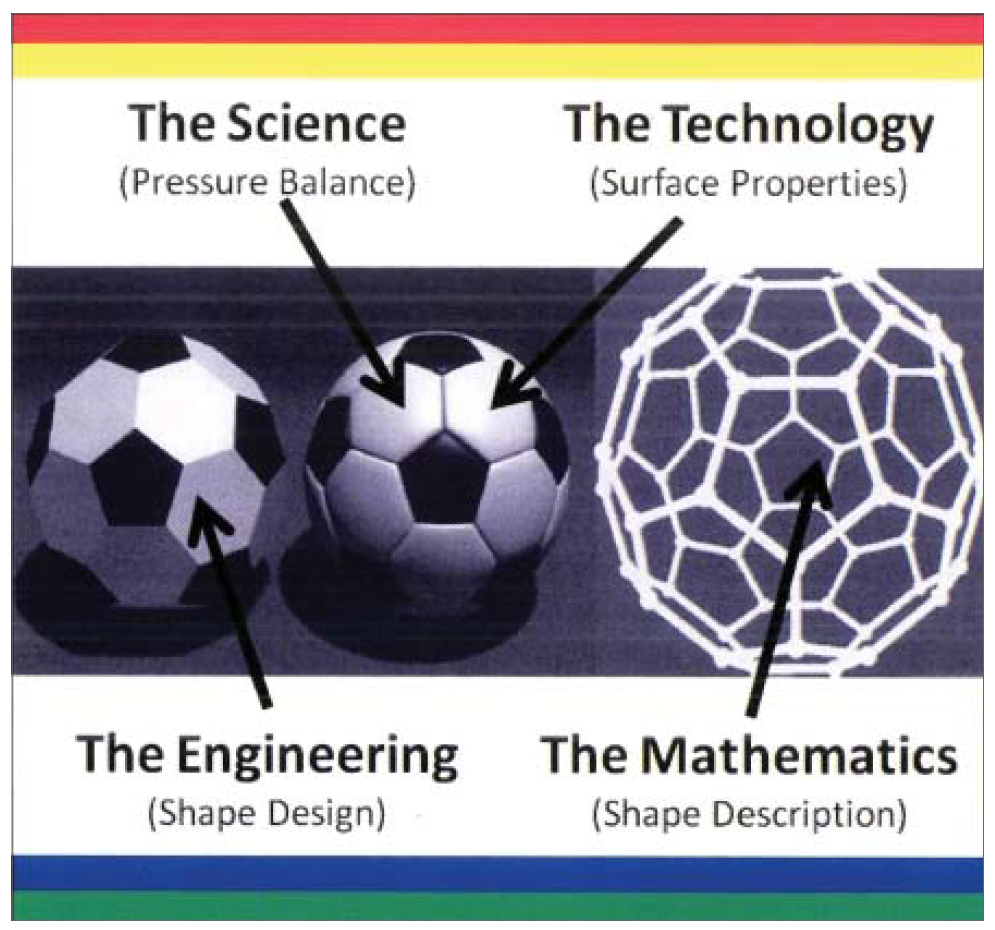The Intersection of Sports and STEM
Piquing kids’ interest in science, technology, engineering, and math may be as easy as picking up a ball.
Published August 1, 2012
By Adedeji B. Badiru
Academy Contributor

Much has been said about the need to find new strategies to spark the interest of kids in STEM education. This is essential for preserving the nation’s technological superiority and ensuring economic advancement. The key is to find the right “hook and bait” to get youngsters interested in technical and scientific fields.
Recent studies have concluded that physical activities can enhance the learning potential of kids. Why not, then, channel that connection toward enhancing STEM education through a structured sports and STEM curriculum?
Ball-based sports (soccer, basketball, tennis, softball, racquetball, etc.) are particularly well-suited for translation into engaging STEM lessons. After all, all balls are not created equal. The STEM properties of sports balls are different based on their intended purposes. Kids can study the properties of individual balls or do a comparative analysis of different types of balls.
Sparking Curiosity
On a recent visit to the Air Force Institute of Technology, Astronaut Mike Fossum, a 1981 graduate of the institute, showed a video where a colleague of his on the International Space Station played baseball all by himself. He would pitch the ball and then let himself float ahead of the ball so that he could bat, then catch the ball at the other end, eventually throwing it to himself again. This is an exciting illustration of how the lack of gravity in space can be exploited for a self-played game.
I do not know many young kids who will see such a demonstration and not ask further questions. With questions comes inquisitiveness and with inquisitiveness comes interest. Teachers can use this interest to explain, engage, and retain attention for STEM principles.
A specific example of using ball sports to teach STEM subjects is provided by the education-oriented website, www.physicsofsoccer.com. This resource presents an engaging connection between physics and soccer. Issues addressed by the website include what makes a ball bounce, how gravity affects the flight path of a soccer ball, and how friction and moisture impede a ball’s path.
These are issues that inquiring young minds would be delighted to explore in a fun, relational way. For example, the flight path of a kicked soccer ball can be modeled to provide engaging simulation experiments to teach kids new concepts about gravity, lift, and drag, without the intimidation that can often accompany these subjects.
Soccer Ball Dissection
Analogous to the way kids learn biology by dissecting a frog, the “dissection” of a soccer ball, both literally and figuratively, can reveal learning opportunities for the STEM properties embodied in the ball. The image to the right illustrates where and how STEM elements fit into the overall integrity of the soccer ball in terms of mathematical description of the shape, surface properties, and shape design of the ball.
The shape of a soccer ball is an example of a solid spherical polyhedron, also known as truncated icosahedrons, which has 12 black pentagons, 20 white hexagons, 60 vertices, and 90 edges.
This example of dissecting a soccer ball to illustrate STEM applications is not in itself the goal here, but rather provides an example of the ways that parents and teachers can leverage whatever is at hand (e.g., sports equipment or other props) to explain and spark interest in STEM subjects.
Every sports opportunity can be leveraged as a science learning opportunity. The key is to recognize and exploit the available opportunity. If we do this, STEM may spread more sustainably than we ever imagined.
Adedeji B. Badiru is professor and head of Systems and Engineering Management at the Air Force Institute of Technology in Dayton, OH.
This story originally appeared in the Summer 2012 issue of The New York Academy of Sciences Magazine.
